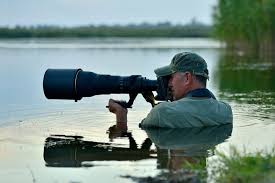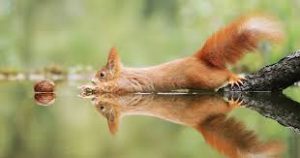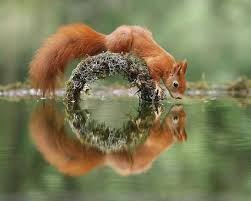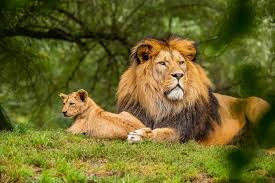Wild life photography is a type of photography that involves capturing photographs of animals and other wildlife in their natural habitats. It can be challenging and rewarding, as wildlife can be unpredictable and difficult to photograph.
To get started in wildlife photography, it’s important to have the right equipment. A good camera with a fast autofocs system and a telephoto lens (at least 300mm or more) is essential for capturing close-up shots of animals from a distance.
A tripod or monopod can also be helpful to stabilize the camera and prevent blurring. When taking wildlife photographs, it’s important to be patient and observant.
Wildlife can be elusive, and it may take time to capture the perfect shot. It’s important to respect the animals and their habitats, and to never disturb or harass them.
Lighting is also an important consideration in wildlife photography. Early morning and late afternoon are usually the best times to capture soft, warm light that can enhance the beauty of your subjects.
It’s also important to pay attention to the direction and quality of the light, as this can have a big impact on the final image. Post-processing can also be an important part of wildlife photography. Adjustments to brightness, contrast, color, and sharpness can help to enhance your images and bring out the details in your subjects.
Overall, wildlife photography can be a challenging but rewarding pursuit for those who love nature and want to capture its beauty in their images. With the right equipment, patience, and technique, it’s possible to create stunning photographs of wildlife in their natural habitats.
Equipment’s for Wild Life Photography

The equipment you need for wildlife photography depends on your budget, experience level, and the type of wildlife you plan to photograph.
Here are some key pieces of equipment that are commonly used for wildlife photography:
Camera body: A good camera body with a high-resolution sensor, fast autofocus system, and high frame rate is essential for capturing sharp images of wildlife. Popular brands for wildlife photography include Canon, Nikon, and Sony.
Lens: A telephoto lens with a long focal length (300mm or more) is necessary for getting close-up shots of wildlife from a distance. The longer the focal length, the greater the magnification and the more detail you can capture. Some popular wildlife lenses include the Canon EF 100-400mm f/4.5-5.6L IS II USM, Nikon AF-S NIKKOR 200-500mm f/5.6E ED VR, and Sony FE 200-600mm f/5.6-6.3 G OSS.
Tripod: A sturdy tripod can help stabilize your camera and prevent camera shake. This is especially important when using longer lenses, which can be heavy and difficult to hold steady. Some popular tripod brands for wildlife photography include Gitzo, Manfrotto, and Really Right Stuff.
Monopod: A monopod can also be useful for supporting your camera and lens, especially when you need to move around quickly or track moving subjects.
Camera backpack: A backpack or camera bag with a good weight distribution and padding can help protect your gear and make it easier to carry. Some popular brands include Lowepro, Think Tank, and F-Stop.
Accessories: Other accessories that can be useful for wildlife photography include a remote trigger (to avoid camera shake), a lens hood (to reduce glare and protect the lens), and a UV filter (to protect the lens from scratches and dust).
Additionally, investing in good quality equipment is important for achieving high-quality results in wildlife photography. However, it’s also important to remember that the best equipment won’t make up for poor technique or lack of experience. Practice, patience, and attention to detail are also essential for capturing great wildlife photos.
Read Also: Yam Flour Production & Packaging Complete Guide
Safety Tips for Photographing Wild Life

Photographing wildlife can be a rewarding and exciting experience, but it’s important to prioritize safety when you’re out in the field. Here are some safety tips to keep in mind when photographing wildlife:
Keep a safe distance: It’s important to respect the personal space of wildlife and avoid approaching too closely. This will help prevent you from accidentally startling or agitating the animals, which could put you in danger.
Use a telephoto lens: A telephoto lens will allow you to get close-up shots of wildlife from a distance. This is safer for both you and the animals.
Observe from a concealed location: Try to position yourself in a concealed location where you can observe wildlife without being seen. This can help prevent you from disturbing their natural behavior and reduce the risk of getting too close.
Stay alert: Always be aware of your surroundings and any signs of animal behavior that could indicate danger. This includes things like sudden movements, vocalizations, and changes in posture.
Avoid eye contact: Direct eye contact can be perceived as a threat by some animals. Instead, try to keep your eyes downcast or use your camera’s viewfinder to observe the animal.
Respect protected areas: Many parks and wildlife preserves have rules and regulations about where you can go and what you can do. It is important to respect these rules and not disturb protected areas or wildlife.
Bring a buddy: It’s always a good idea to bring a friend or companion with you when you’re out in the field. Not only is it safer, but it can also be more fun to share the experience with someone else.
Techniques for Wild Life Photography

Here are some techniques for wildlife photography that can help you capture great shots:
Composition and Framing: Compose your shot carefully to create an aesthetically pleasing image. Use the rule of thirds to position the subject off-center and create a more dynamic composition. Also, consider the background and try to avoid clutter or distracting elements.
Exposure Settings: Exposure can make or break a photo, especially when dealing with unpredictable lighting conditions. Adjust your aperture and shutter speed to achieve the correct exposure while keeping your ISO as low as possible to reduce noise.
Autofocus and Manual Focus: Use autofocus when the animal is in motion or when you’re shooting in low light. However, in some situations, manual focus may be necessary, such as when your autofocus struggles to lock onto your subject, or when you want to maintain focus on a specific part of the animal.
Shutter Speed and Aperture: Choose an appropriate shutter speed to freeze the animal’s motion, and adjust your aperture to achieve a shallow depth of field that isolates your subject from the background.

ISO and Noise Reduction: In low light situations, it’s important to increase your ISO to maintain a proper exposure, but be careful not to set it too high, as this will introduce noise into your images. Use noise reduction tools in post-processing to help minimize the effects of high ISO.
White Balance and Color Correction: Set your white balance to match the lighting conditions, and correct any color casts in post-processing.
Patience and Observation: Wildlife photography requires patience and a keen sense of observation. Be prepared to wait for long periods for the right shot, and keep your eyes peeled for any signs of animal behavior that could lead to a great photo opportunity.
Read Also: Comprehensive Guide on How to Grow Broccoli
Wild Animal photography

Wild animal photography is a specialized form of photography that involves capturing images of animals in their natural habitats. Here are some tips for successful wild animal photography:
Research your subject: Before heading out to photograph wild animals, do some research on the animal’s habitat, behavior, and habits. This will help you understand how to approach the animal and where to find it.
Use a telephoto lens: A telephoto lens is essential for capturing close-up images of wild animals from a safe distance. It also allows you to isolate the subject from the background.
Pay attention to the light: Light plays a critical role in photography, and it can make or break your images. Learn how to use different lighting conditions to your advantage, such as backlighting or sidelighting, to create depth and dimension.
Be patient: Wild animal photography requires patience and perseverance. Be prepared to spend long hours waiting for the right moment, and keep an eye out for any signs of animal behavior that could lead to a great photo opportunity.
Avoid disturbing the animal: It’s important to respect the animal’s personal space and avoid causing any unnecessary stress or disturbance. Stay quiet, move slowly and avoid sudden movements that could startle the animal.
Experiment with different angles: Don’t be afraid to get creative with your angles and composition. Try shooting from different perspectives, such as low angles or from above, to create unique and compelling images.
Edit your images carefully: Post-processing can help enhance your images and bring out their full potential. But be careful not to over-edit your photos, and avoid making changes that alter the natural behavior or appearance of the animal.
Wild animal photography can be both challenging and rewarding. By following these tips and practicing your skills, you can capture stunning images of wildlife in their natural habitats.





